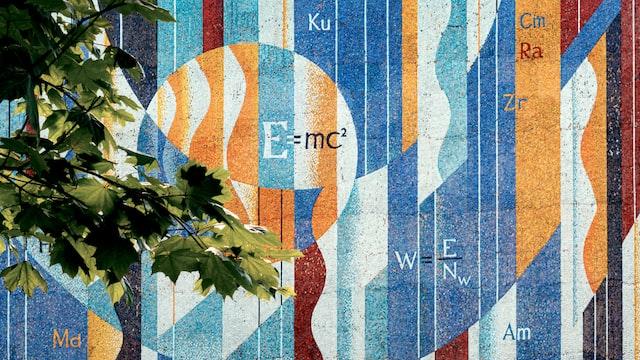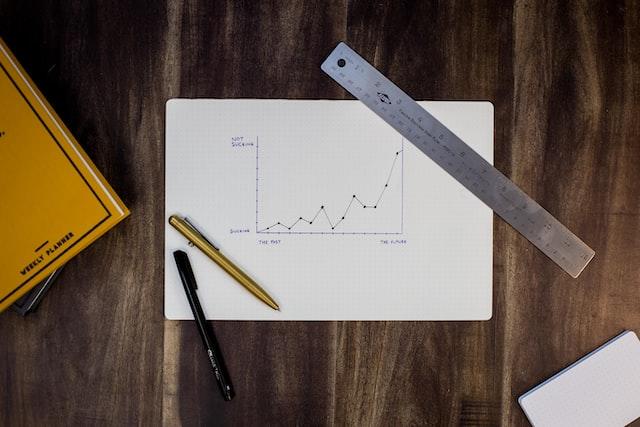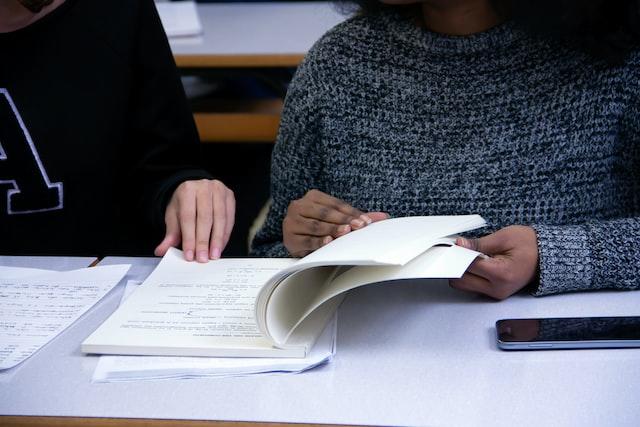Do you know what Brian May (British musician), Lee Sang Yoon (Korean actor) and Angela Merkel (German politician) have in common?
Well, apart from the fact that they're famous public figures, all three of them majored in Physics during their undergraduate studies.
It's fair to say that Physics is a popular field of study across the globe.
If you have always been interested in Physics since your secondary school days and you're seriously considering studying Physics for your degree, you're in the right place.
Right after completing your SPM or IGCSE, you'll have to cross a bridge aka pre-university studies. One of the most common pathways you can take is A-Levels.
Taking the Physics paper at this level will give you a good foundation that will help you transition into your undergraduate studies later. That's why in this article, we will take a look at the marking scheme and examination format of the A-Levels Physics subject.

Reviewing The Topics Under The AS and A-Levels Physics Syllabus
First, let's have an overview of what you'll study under your A-Levels Physics syllabus. Here is the complete list of topics that will be covered through your A-Levels studies for Physics.
AS Physics Syllabus (1st year)
- Topic 1 Physical quantities and units
- Topic 2 Kinematics
- Topic 3 Dynamics
- Topic 4 Forces, density and pressure
- Topic 5 Work, energy and power
- Topic 6 Deformation of solids
- Topic 7 Waves
- Topic 8 Superposition
- Topic 9 Electricity
- Topic 10 D.C. circuits
- Topic 11 Particle physics

Photo by Nikita Palenov on Unsplash
A-Level Physics Syllabus (2nd year)
- Topic 12 Motion in a circle
- Topic 13 Gravitational fields
- Topic 14 Temperature
- Topic 15 Ideal gases
- Topic 16 Thermodynamics
- Topic 17 Oscillations
- Topic 18 Electric fields
- Topic 19 Capacitance
- Topic 20 Magnetic fields
- Topic 21 Alternating currents
- Topic 22 Quantum physics
- Topic 23 Nuclear physics
- Topic 24 Medical physics
- Topic 25 Astronomy and cosmology
Throughout the syllabus, students will also be taught several practical topics.
Don't forget to check out these resources to improve your A-Levels Physics grade.
How Many Papers Are There For A-Level Physics?
After reviewing the subject syllabus, let's look at how you will be accessed. Altogether, there are five papers that will test you on different topics and components.
Paper 1
For Paper 1, candidates need to answer 40 multiple-choice questions based on the AS Physics syllabus (from topic 1 to topic 11).
The duration of the test is 1 hour and 15 minutes. [40 marks]
Paper 2
For Paper 2, candidates will also answer a series of structured questions based on the AS Physics syllabus.
The duration of the test is also 1 hour and 15 minutes. [60 marks]
Paper 3
For Paper 3, candidates will be given two structured questions and practical work. The scope of the questions revolves around the experimental skills under the practical assessment section of the entire A-Level Physics syllabus.
An important note: Some main ideas of the questions could be outside the syllabus content.
Question 1 centres around an experiment in which candidates have to collect data, plot a graph and come out with the right conclusions.
Question 2 also centres around another experiment, but the focus is more on data collection and making conclusions as well as giving the right suggestions for improving the method of conducting the experiments.
The duration of the test is 2 hours. [40 marks]
Paper 4
For Paper 4, candidates will answer a series of structured questions from the A-Level Physics syllabus (from topics 12 to 25) this round. Having said that, having a good core understanding of the previous AS Physics syllabus will be helpful for this level.
The duration of this paper is 2 hours. [100 marks].
Paper 5
For Paper 5, candidates will be tested on their planning, analysis and evaluation skills. They need to answer two compulsory questions.
Similar to Paper 3, the questions are also taken from the practical component of the syllabus.
The duration of this paper is 1 hour and 15 minutes. [30 marks].
Read this article to master the tips to ace all your A-Level Physics papers.

Things To Take Note Of When You're Answering Each Paper
Now, we will move on to some practical exam-answering techniques for different components of each paper.
1)Objective questions
You will only be tested on objective questions for your Paper 1. Make sure you are well versed with all the 11 topics of the AS syllabus.
For this paper, you will need to apply your knowledge and understanding of the basic concepts and apply them correctly in the given scenarios.
Eliminate the answer that is far-fetched from the tested topic and correctly apply the formulas and laws that you have learnt when you're answering the questions.
2)Structured questions
When it comes to structured questions, you will need to answer them in Paper 2 (AS syllabus) and Paper 4 (A-Level syllabus).
Important note: Paper 4 holds a higher weightage and mark allocation than Paper 2 because it's the only written theoretical assessment that's based on your A-Level Physics syllabus.
To do well in this component, you must show complete steps for calculation questions (which include full equations, formulas, and right answers with complete S.I. units).
Furthermore, it's also important to identify the keywords and command words when you're drafting the answers. For instance, define, state and explain, give examples to support this statement etc.
3)Practical components
It's important to know how you will be graded for your practical assessment for your Paper 3 and Paper 5. You'll have to include these elements in your final answers.
Manipulation, measurement and observation
- Successful collection of data
- Quality of data
Presentation of data and observations
- Table of results
- Recording of data, observations and calculations
- Graph

Photo by Isaac Smith on Unsplash
Analysis, conclusions and evaluation
- Interpretation of graph
- Drawing conclusions
- Estimating uncertainties
- Identifying limitations
- Suggesting improvements
- Data analysis
- Table of results
- Conclusion
- Treatment of uncertainties
Planning
- Defining the problem
- Methods of data collection
- Method of analysis
- Additional detail including safety considerations
Now that you have gained a clearer and more comprehensive view of the A-Level Physics paper, you're one step closer to your dream to pursue your undergraduate studies in Physics.
Beneficial Takeaways You Can Gain From Previous A-Level Principal Physics Examination Reports
You'll be surprised at how much you can benefit from the principal examination reports that are released each year by the Cambridge International Education group.
It's free to be downloaded from the official websites as well as other student blogs on the Internet. Let's look at the takeaways.
Takeaway 1: Knowing what the examiners are looking for (aka marking scheme)
You will find the complete answers to every question for all the papers in this report. Not only that, you will be able to read the examiner's comments in the right way to gain marks for each component.
For example, here is one of the comments that examiners often mentioned for structured questions and practical components:
In ‘show that’ questions, all the steps in the solution must be shown. Full credit cannot be awarded if key steps, such as the rearrangement of an equation, are not shown.
When collecting data, candidates should be encouraged to use the whole range of the variable available and plan carefully what values should be used early on so that the table can take the form of a sequential set of readings.
Takeaway 2: A review of the most common mistakes made by students
The report also indicates the percentage of error for each question. You can identify where candidates usually make mistakes and why they lose marks in between.
In other words, you're practically learning from others' mistakes. It's a significantly lesser price to pay.
Takeaway 3: Gain confidence for the actual exam
The more you are well-versed with the marking scheme and correct answering techniques for all the papers, the more confident you will be when you're answering the actual questions.
You'll also have a better understanding of the asked questions and more likely to have a more effective revision later.

Photo by lilartsy on Unsplash
How To Make The Best Out Of Your Physics Tutoring Lessons
Perhaps, you prefer to have a one-to-one revision lesson from an experienced Physics tutor. That's great news!
Here are three tips to help you have a wonderful and fulfilling tutoring experience.
Tip 1: Find a Physics tutor from a reliable tutoring platform
Granted that there are so many people offering Physics tutoring these days, we know that it's so hard to choose one.
We highly recommend you to visit the Superprof Malaysia homepage to find an experienced Physics tutor. This tutoring platform is student-friendly as it greatly accommodates to different students' needs according to their learning level, learning pace, maximum budget and preferred learning mode.
As you look through the tutors' profiles, you can have a glance at their basic information and past students' reviews before you contact them.
Tip 2: Communicate directly with your tutor about your learning needs /expectations
Once you have contacted them, you need to be honest about your expected learning outcomes and learning needs. That way, your tutor will be able to come out with a proper learning structure for your lessons.
For instance, if you are aiming for a solid A for the subject, but you are not confident about your practical components, you can request more exercises for that component.
Tip 3: Review and practice after your lessons
Last but not least, you have to put in the effort to repeat and practice what you have learnt after each lesson. Always be ready for questions and do not hesitate to ask your tutor until you truly understand.
After all, it's your time and money that we're talking about. You have to make each lesson count!
We hope you have found this article insightful. All the best in acing your A-Level Physics papers and we hope that more students will pursue a degree in Physics!















